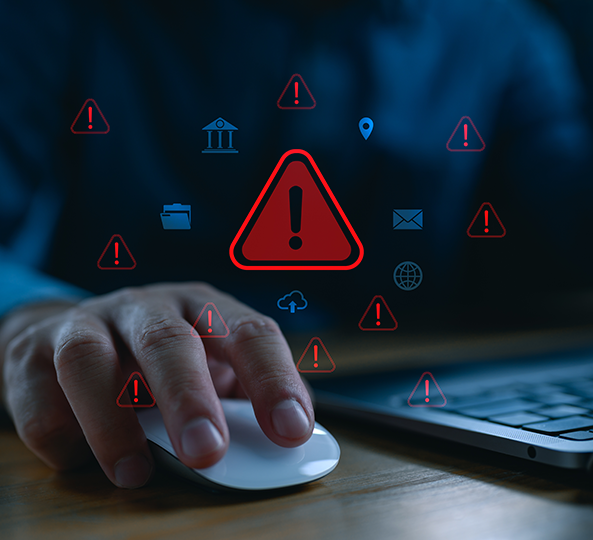What’s Included in Pro-Level Remote IT Support? A Full Breakdown
Explore the full range of pro-level remote IT support services, including cybersecurity, cloud management, and disaster recovery for modern UK businesses.

In today’s increasingly digital-first business environment, robust IT systems are no longer optional—they are critical. For organisations looking to thrive, seamless connectivity, system uptime, and digital resilience are essential. Whether you’re a start-up scaling operations or an established business modernising its infrastructure, remote IT support has become a vital tool. Yet, the capabilities of pro-level remote IT support go far beyond simply fixing glitches.
This comprehensive breakdown explores what exactly is included in professional-grade IT support services, how they provide end-to-end coverage, and why small to medium-sized enterprises (SMEs) should especially pay attention to cybersecurity integration.
Defining Pro-Level Remote IT Support
When we refer to “pro-level” remote IT support, we’re describing a package that delivers far more than traditional helpdesk services. Unlike basic plans that only react to technical issues, high-tier support is proactive, strategic, and preventive. These services are engineered to safeguard business continuity, prevent downtime, and optimise performance.
A cornerstone of this tier is 24/7 availability—offering round-the-clock monitoring and response to IT incidents before they escalate. Whether it’s a hardware issue, software update, or security threat, expert technicians can troubleshoot and resolve problems remotely, minimising any operational interruptions.
What also differentiates pro-level support is its holistic integration with broader business goals. This includes strategic IT planning, cybersecurity enhancement, remote system optimisation, and futureproofing measures—all tailored to align with business scale and growth plans.
Core Services Offered in Pro-Level Remote IT Support
Let’s explore the foundational components of a professional-grade remote IT support package:
1. 24/7 Monitoring and Response
Remote IT support begins with continuous surveillance of IT environments, including servers, desktops, laptops, and mobile devices. This proactive monitoring helps detect unusual activity, potential system failures, or hardware degradation before it leads to downtime.
Immediate alerts are triggered when anomalies occur, allowing support teams to act swiftly. This level of responsiveness significantly reduces the mean time to resolution (MTTR) and protects productivity.
2. Helpdesk and Technical Assistance
Another critical element is accessible, human-focused support. A pro-level helpdesk offers immediate technical assistance to employees struggling with connectivity issues, software configuration, or device problems. Unlike generic call centres, these services often include tiered expertise and escalation processes to resolve complex problems efficiently.
Additionally, support teams often utilise ticketing systems to track, prioritise, and resolve issues. This structured approach boosts accountability and provides insights into recurring challenges.
3. Cloud Integration and Management
Cloud computing is now central to modern IT infrastructures, and managing cloud services is a major part of professional remote IT support. This includes migrating data to secure cloud environments, managing storage allocations, and ensuring high availability of applications.
Cloud integration also enables businesses to scale operations seamlessly. Teams can access data from any location, fostering hybrid work models and ensuring continuity regardless of physical limitations.
Advanced Security Services
With increasing threats to digital infrastructure, advanced cybersecurity is a non-negotiable aspect of remote IT support—especially when it comes to cyber security for small and medium enterprises. These organisations often lack the resources to maintain internal security teams, making professional services a lifeline.
1. Endpoint Protection and Antivirus Management
Endpoint protection involves securing every device that connects to your network—whether it’s an office PC, personal laptop, or mobile device. Sophisticated antivirus tools are deployed and constantly updated to detect and neutralise malware, spyware, and other threats.
These systems are not only defensive but also offer monitoring dashboards for IT administrators to view risk levels and respond accordingly.
2. Firewall Configuration and Network Defence
Firewalls serve as digital gatekeepers, filtering traffic and blocking unauthorised access. Pro-level support ensures that firewalls are not just installed but finely configured to suit your business operations.
Network defences may also include virtual private networks (VPNs), intrusion prevention systems, and encrypted remote access protocols, all of which contribute to a secure and compliant infrastructure.
3. Cyber Security for Small and Medium Enterprises
SMEs face unique cyber risks—often targeted due to perceived vulnerabilities. Pro-level support tackles this through tailored risk assessments, email filtering, and user authentication systems.
Security awareness training is sometimes bundled into these packages, helping SMEs create a human firewall against phishing, social engineering, and weak password habits. Proactive cyber security for small and medium enterprises enables compliance with regulations and safeguards customer trust.
Strategic IT Planning and Consultation
Remote IT support at the professional level also acts as a strategic partner, helping businesses map out their future technological trajectory.
1. IT Audits and Health Checks
Routine audits are carried out to identify inefficiencies in systems and software. These health checks evaluate bandwidth use, server performance, and device lifecycle to optimise operational health.
2. Infrastructure Planning
Remote teams work closely with in-house stakeholders to ensure that IT architecture can support business growth. This includes forecasting hardware and software needs, planning for virtual workspaces, and integrating scalable solutions.
3. Budgeting and Roadmap Creation
Through regular consultations, businesses can receive forecasts for IT investments. This helps avoid surprise costs, encourages forward-thinking upgrades, and aligns technology with broader business goals.
Backup, Disaster Recovery & Business Continuity
Downtime isn’t just inconvenient—it’s expensive. Professional IT support takes business continuity seriously by incorporating comprehensive backup and disaster recovery solutions.
1. Automated Backups
Daily or hourly backups are scheduled to secure critical data and minimise potential loss. These backups are encrypted, stored off-site or in the cloud, and regularly validated.
2. Disaster Recovery Protocols
Disaster recovery (DR) plans define how your organisation will respond to a system failure, cyberattack, or natural disaster. With clear recovery point objectives (RPOs) and recovery time objectives (RTOs), businesses can resume operations quickly with minimal disruption.
3. Real-Time Testing
DR protocols are only effective if tested. Pro-level support ensures regular simulations are carried out to validate data restorability and procedural accuracy.
Key Benefits of Partnering for Remote IT Support
Beyond the operational benefits, there are strategic advantages to leveraging high-level IT services remotely.
1. Reduced IT Costs
Outsourcing IT functions to a professional service provider eliminates the overhead of maintaining in-house personnel, equipment, and software licences. You gain access to a full team of experts at a predictable monthly cost.
2. Increased Uptime
System crashes and network outages can have devastating consequences. Continuous monitoring and swift issue resolution significantly reduce downtime and keep your team productive.
3. Future Proofing through Cybersecurity
Technology evolves rapidly, and threats do too. With advanced cybersecurity baked into your remote IT service package—especially those designed for cyber security for small and medium enterprises—you stay protected against the latest vulnerabilities and risks.
Conclusion
Modern businesses rely on uninterrupted, secure, and scalable IT systems—and pro-level remote IT support is the bedrock that makes this possible. From 24/7 system monitoring and strategic infrastructure planning to cloud integration and cybersecurity solutions, every aspect is designed to empower businesses through resilient technology.
Especially for small and medium enterprises, the combination of robust remote IT support and dedicated cyber security for small and medium enterprises provides a competitive edge in today’s threat-filled landscape.
To remain agile, secure, and future-ready, companies must prioritise comprehensive support—not just for day-to-day troubleshooting, but for long-term growth.
Renaissance Computer Services Limited remains a trusted partner in delivering these expert solutions to organisations across the UK, ensuring that your technology supports rather than hinders your ambitions.











































































